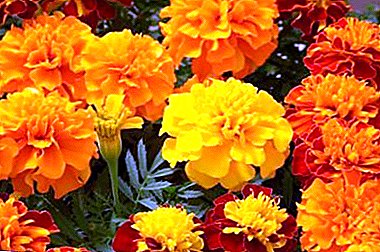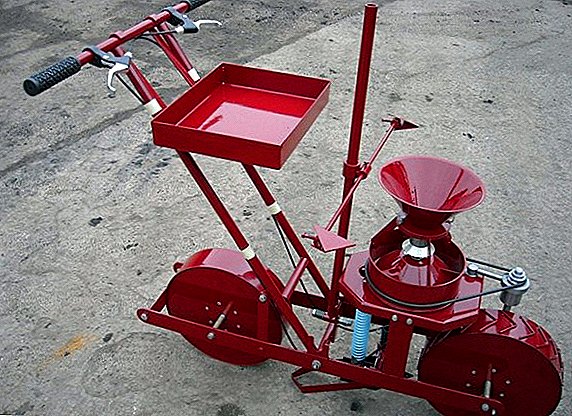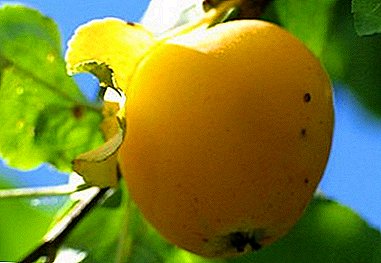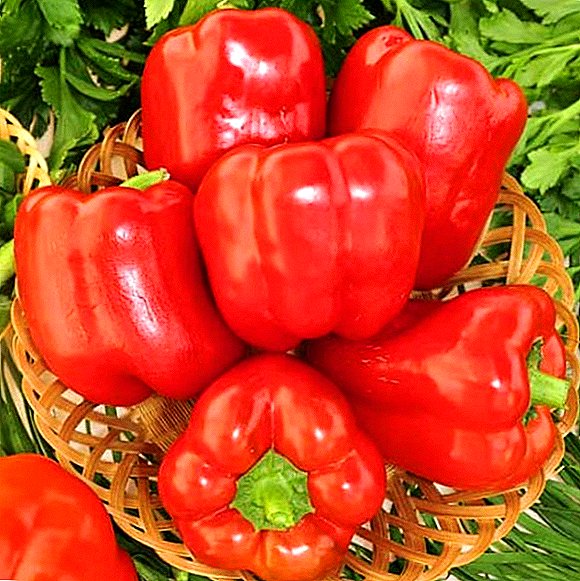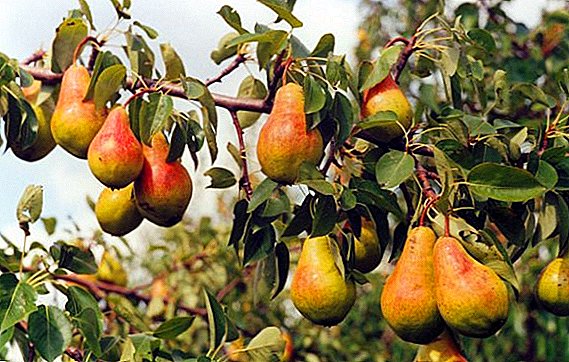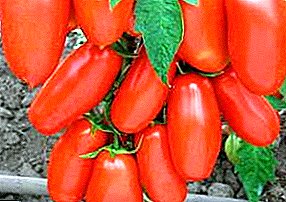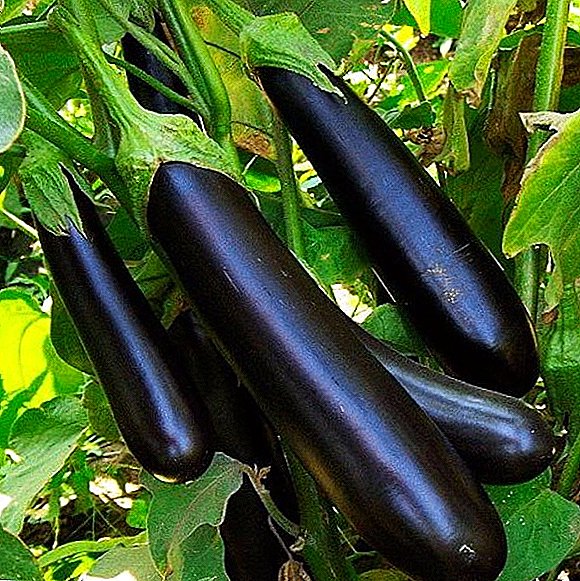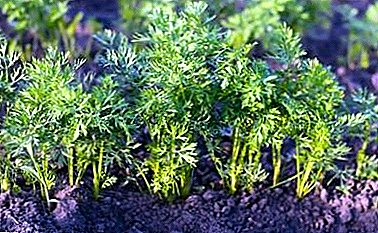
Without carrots, it is difficult to imagine the diet of any person, so almost every backyard plot must have a garden for this root crop.
But far from all gardeners know that sowing seeds does not mean collecting a good harvest: growing carrots requires adhering to the basic rules, one of which is regular watering.
The frequency of watering carrots and the amount of water required will be discussed in this informative and interesting article.
Why is it important to moisten the root with a certain frequency?
The quality of the future root depends on the frequency and amount of irrigation. So, regular watering in the required amount at each of the most important stages of the growing season of the plant will ensure a good harvest in the future; lack of moisture or its excess, failure to comply with the basic requirements for irrigation - a guarantee that the vegetable will develop unevenly, and subsequently will get an irregular shape and unimportant taste.
What determines the frequency?
 The main factors affecting the frequency of irrigation of the root and the amount of water consumed are:
The main factors affecting the frequency of irrigation of the root and the amount of water consumed are:
- Phase of plant development.
- Weather.
- Carrot variety.
Main nuances:
- At the beginning of development, the plant needs abundant irrigation: it just needs moisture for cell division, which will ensure the full growth of the future root crop.
- As far as growth, the volume of liquid must be reduced, and a few weeks before harvesting, watering should be stopped completely: such a step will make it possible to prevent the development of many vegetable diseases, the main cause of which is an excess of moisture.
- Additional watering will be required if there is no precipitation for a long time, and, conversely, in rainy weather, the amount of water supplied must be reduced to a minimum or stopped completely.
- As for the variety, such varieties as Tushon, Type Top, Golandka, Losinoostrovskaya like abundant watering, but Perfection, Sirkana F1 - are quite resistant to drought.
Consequences of watering
Too abundant
A large amount of moisture will give impetus to the enhanced growth of the aerial parts of the plant.: the tops will be lush and juicy. But the root crop will suffer: the main part will wither away over time, giving the opportunity to actively develop the lateral processes. The result - a low crop.
Insufficient
The lack of moisture will also, first of all, affect the quality of the root crop: it will grow small, with a thick skin and a bitter aftertaste.
The result of such a thoughtless action will be:
- crackling of the root;
- deterioration of its taste;
- increasing the risk of damage to various diseases.
How to moisturize when planting?
Before germination
 It is advisable to sow the seeds to produce in a pre-well-moistened soil, since attempts to water the garden bed may end in fiasco: a stream of water from a watering can will most likely wash the seeds out.
It is advisable to sow the seeds to produce in a pre-well-moistened soil, since attempts to water the garden bed may end in fiasco: a stream of water from a watering can will most likely wash the seeds out.
If for some reason it was not possible to water the bed before sowing, then, of course, this should be done after by drip irrigation. The extreme option - watering can with a small nozzle.
If on the eve of sowing there was a heavy rain, then there is no need for pre-sowing irrigation, because the soil will remain wet for a long time. Humidity of the ground should be maintained for a long time and not evaporate, as the seeds of carrots germinate for a long time (2 weeks). Therefore, many experienced gardeners recommend that before emergence shoots cover the beds with film or mulch them with hay, compost, peat (layer height - from 3 to 8 centimeters depending on the substance).
Another option is to sprinkle carrot seeds with a mixture of peat and sand in equal proportions, which will also allow you to retain the required amount of moisture in the open ground.
After
- First time. After the first shoots hatch, the rate of irrigation usually increases (during May six to eight irrigations at the rate of five to six liters per square meter of bed) and remains so until the appearance of three to four processes.
An important condition: you need to water the beds often (once in 4 - 5 days), but in small portions, checking the depth to which the moisture has penetrated.
The fact is that for a young plant stagnant water is destructive, since it can lead to putrefactive processes and subsequently to the death of young carrots. The root crop needs additional watering after thinning: the removal of excess seedlings injures the roots of the plant, therefore, in order for them to harden again in the ground, they simply need water.
- Further. As already mentioned, the frequency and volume of watering the plant in the summer months, when it begins to form, ripen and pour, depends on the growth phase of carrots and weather conditions.
- In the summer of June, carrots need to be watered at least 4-6 times (once every 5-7 days). The recommended volume is 10-12 liters per m2.
- In July and August, the frequency of irrigation gradually decreases, and the amount of water used, on the contrary, increases. On average, in the heat of a root crop should be watered every 7 - 10 days at the rate of 15 - 20 liters per m2 garden beds.
- Last watering before picking root vegetables. 2 - 3 weeks before harvesting, watering the beds should be stopped. Such a measure will provide a high "keeping quality" of the root, making it more resistant to fungal infections.
However, before harvesting experienced gardeners advise to moisten the soil a little overnight so that the root crop is easier to extract, and it remains succulent for a long time.
Special crop care
During the heat
 July and August are usually famous for fairly high temperature conditions, so the question of watering plants, including carrots, should be approached with great responsibility. The usual irrigation scheme in July includes 4 irrigations in the amount of 12–15 liters per m2 (once a week), and in August –1–2 (once in 15–30 days) at a rate of 5–6 liters per m2.
July and August are usually famous for fairly high temperature conditions, so the question of watering plants, including carrots, should be approached with great responsibility. The usual irrigation scheme in July includes 4 irrigations in the amount of 12–15 liters per m2 (once a week), and in August –1–2 (once in 15–30 days) at a rate of 5–6 liters per m2.
Of course if hot dry weather keeps for a long time, then the vegetable should be watered much more oftenotherwise the plant may simply dry out. It is better in such conditions to water in the morning or evening when there is no likelihood of direct sunlight on the tops of the plant and the soil around it. Otherwise, the water will evaporate extremely quickly from the soil surface, plant:
- will receive less moisture;
- overheats;
- will get burned
Recommended water temperature for irrigation is + 25С.. But fanatically, irrigation should also not be approached, because carrots are a root crop that can take all the necessary things from the soil, including moisture. The above-ground part of the plant may signal the need for watering: the plant needs moisture if its leaves are wilted.
In rainy weather
If the summer was rainy, then, naturally, it is necessary to adjust the irrigation pattern: it should be reduced or stopped altogether. However, we should not forget that the precipitation may be frequent, but not abundant: the amount of water in this case will not be enough to wet the soil to the depth necessary for the root crop.
In this case, it is advisable to check how deep the water has saturated the soil. This can be done by picking up a shovel and plunging it into the ground to the depth of the bayonet. After removing a clod of soil, it should be carefully examined: after a short-term rain, the soil is usually moistened to a depth of no more than 2-3 centimeters, and everything below that remains dry, so the carrot needs watering according to the basic scheme.
The moisture content of the soil in which the carrots were planted needs constant monitoring: it should not be dry, but also overly moist. Both the first and the second is detrimental to the root and can lead to crop loss. He can save the care of the gardener and his responsibility.


